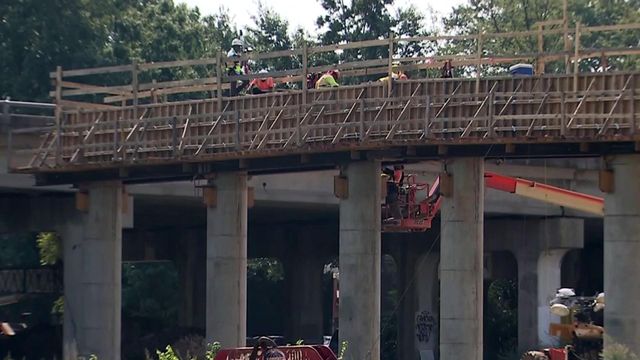Future NCDOT plans billions short after refiguring costs
Conversations are ongoing to scale back on the work, but this is more fuel for a push to increase transportation revenues in North Carolina.
Posted — UpdatedThe overrun forced a detour in the state's long-run planning process and sparked concerns that new projects won't be added in the coming years and that currently planned projects may be dropped.
“It is a problem," Joey Hopkins, the department's deputy chief engineer for planning, acknowledged last week.
The department, and state leaders sympathetic to its cause, have said for years that transportation has a revenue problem. Gasoline taxes pay for most projects, and the federal government hasn't raised the rate since 1993. State lawmakers changed North Carolina's gasoline tax in 2015, allowing it to increase with inflation and the state's population.
But as more people shift to electric vehicles – and even more fuel-efficient vehicles – those revenues will wane, and the trend is only expected to increase.
“This is another symptom of the problem of our revenue streams being out of date," said Sen. Mike Woodard, D-Durham, who follows transportation issues. "It makes it clear that we need to modernize the DOT’s revenue, and that’s going to be a heavy lift, but it’s past time to roll up our sleeves.”
Some of its recommendations:
- Increase the current 3 percent tax on vehicle sales to 5 percent
- Increase the state sales tax
- Tax transportation network companies like Uber and Lyft
- Increase the state's fee on electric vehicles and create one for hybrids
- Charge delivery fees on goods bought online
- Experiment with a pay-per-mile program that would track how far people drive
- Toll more roads
The project cost increases revealed over the last few months stem from a routine re-estimation that came during a global pandemic that upset supply chains, raising material costs, and roiled labor markets, raising those costs as well. Real estate prices in North Carolina are going up, too, boosting the costs DOT expects to pay in the coming years to buy property to build or widen roads.
“What we’re dealing with now in our market … the cost increases we’re dealing with now are unprecedented," Hopkins said. "The housing market, our right-of-way costs, sometimes seem to be going up daily.”
Hopkins stressed that the department is solvent, with "almost $2 billion in the bank.” He said projects on DOT's 12- and 36-month let lists shouldn't be affected. Further out, hard decisions await, and the department is talking to local leaders around the state about scaling projects back to save money without eliminating projects.
A DOT working group will also put together a methodology to decide what planned items may get dropped.
“We want to have a transparent and fair process," Hopkins said.
It probably won't be approved by the State Board of Transportation until the summer of 2023, Hopkins said. It's possible some construction, material and labor costs will come down between now and then. Costs also vary depending on the route road projects take, which hasn't been decided for some of these projects, and their size.
"I just want to reiterate: We’ve got time to work this out," Hopkins said. "We need to have a document that people can believe in when they look at it."
Chris Lukasina, executive director of the Raleigh area's transportation planning group that works with DOT, the Capital Area Metropolitan Planning Organization, said the new numbers represent "a higher level of over-programmed than I’d say is normal.”
"I don’t know that we’re at a point where there’s a lot of discussion about losing projects," Lukasina said. "We certainly don’t want to lose any projects.”
‘We’re really looking at our projects," he said, "to make sure that we have good numbers and that those stay in there and continue to move towards completion.”
Related Topics
• Credits
Copyright 2024 by Capitol Broadcasting Company. All rights reserved. This material may not be published, broadcast, rewritten or redistributed.






